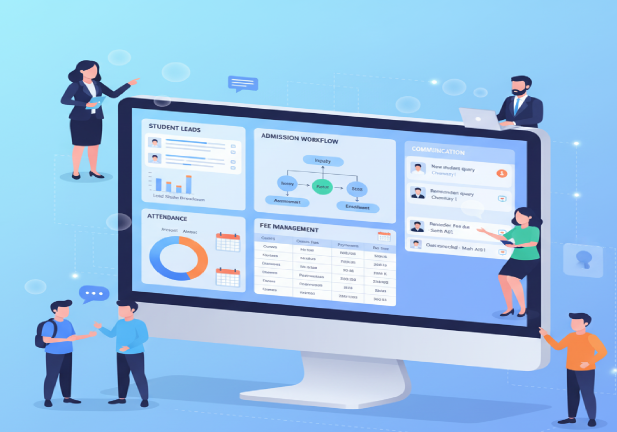The entrepreneurial spirit is alive and well in 2025, with groundbreaking ideas emerging across industries. For many startups, a mobile app isnt just an add-on; its the core of their business model, the direct line to their customers, and the engine driving growth. However, the path to a successful app launch is often paved with questions, particularly around the crucial aspect of cost. Understanding the intricacies of startup mobile app development cost is paramount for effective planning and resource allocation.
This comprehensive how-to guide will navigate you through the landscape of mobile app development in 2025, providing a detailed breakdown of potential costs and a strategic framework for bringing your app vision to life. Whether youre a solo founder with a disruptive idea or a small team ready to scale, this guide will equip you with the knowledge to make informed decisions and avoid costly pitfalls.
Phase 1: Laying the Foundation - Defining Your App and Strategy
Before even thinking about code or design, the initial phase of defining your app and strategy is critical. This groundwork will significantly impact the overall startup mobile app development cost.
1. Idea Validation and Market Research:
- The "Why": What problem does your app solve? Who is your target audience? What are their needs and pain points? Thorough market research is non-negotiable. Analyze your competitors, identify gaps in the market, and validate your core idea.
- Cost Implications: While this phase might seem low-cost, neglecting it can lead to building an app nobody wants, resulting in wasted resources. Invest time (your own or a consultants) in surveys, interviews, and competitor analysis. Budget: $0 - $5,000 (depending on the scope of research).
2. Defining Features and Functionality:
- Minimum Viable Product (MVP): Resist the urge to build everything at once. Focus on the core features that address your primary value proposition. An MVP allows you to launch quickly, gather user feedback, and iterate based on real-world usage.
- Feature Prioritization: Create a detailed list of desired features and prioritize them based on their impact and feasibility. Use frameworks like the MoSCoW method (Must have, Should have, Could have, Wont have) to guide your decisions.
- Cost Implications: Fewer features in the initial MVP translate to lower development costs and faster time-to-market. Be realistic about whats essential for your first version.
3. Platform Selection (iOS, Android, or Cross-Platform):
- Target Audience: Where does your target audience predominantly reside? iOS users tend to have higher disposable income in some markets, while Android boasts a larger global market share.
- Budget Constraints: Developing native apps for both iOS and Android simultaneously can significantly increase costs. Cross-platform development frameworks (like React Native or Flutter) allow you to build one codebase for both platforms, potentially saving time and money. However, consider potential performance trade-offs.
- Cost Implications: Native development generally incurs higher initial costs compared to cross-platform development. Budget: This decision will heavily influence subsequent development costs.
4. Creating Wireframes and Prototypes:
- Visualizing the User Journey: Wireframes are basic skeletal structures of your app screens, outlining the layout and flow. Prototypes are interactive mock-ups that simulate the user experience.
- User Experience (UX) Design: Investing in good UX design ensures intuitive navigation and a positive user experience, crucial for user retention.
- Cost Implications: Professional UX/UI designers will charge for their expertise. The complexity of your app and the number of screens will impact the cost. Budget: $1,000 - $10,000+ (depending on complexity and designer rates).
5. Technical Documentation and Specifications:
- Clarity is Key: Detailed technical documentation outlines the functional and non-functional requirements of your app, ensuring everyone on the development team is on the same page.
- Avoiding Misunderstandings: Clear specifications minimize ambiguity and reduce the likelihood of costly rework during development.
- Cost Implications: Investing in thorough documentation upfront can save significant costs down the line by preventing misinterpretations and errors. Budget: Included in the cost of a business analyst or project manager.
[ Read also : How To Determine The Cost of MeWe App Development ? ]
Phase 2: Building Your Vision - Development and Testing
This is where the actual coding and bringing your app to life happens, representing a significant portion of the startup mobile app development cost.
1. Choosing Your Development Partner:
- Freelancers vs. Agencies: Freelancers can be more cost-effective for smaller projects, but agencies often offer a wider range of expertise and more robust project management.
- Location Matters: Development costs vary significantly geographically. Hiring a mobile app development company in usa or a software development company in usa will generally be more expensive than outsourcing to other regions. Consider factors like communication, time zone differences, and cultural nuances.
- Vetting Potential Partners: Request portfolios, check references, and ensure their technical expertise aligns with your project requirements. Look for a reputable mobile app development company or software development company with a proven track record.
- Cost Implications: This is the most variable cost factor. Freelancer rates can range from $30 - $150+ per hour, while agency rates can range from $50 - $300+ per hour, depending on location, experience, and team size.
2. Front-End Development:
- User Interface (UI) Implementation: This involves translating the design mock-ups into functional code that users interact with.
- Platform-Specific Considerations: Native iOS development typically uses Swift or Objective-C, while native Android development uses Java or Kotlin. Cross-platform frameworks have their own specific languages and technologies.
- Cost Implications: The complexity of the UI, animations, and custom elements will influence the front-end development cost.
3. Back-End Development:
- The Engine Room: The back-end handles data storage, server-side logic, APIs (Application Programming Interfaces), and user authentication.
- Scalability and Security: Choose a back-end architecture that can scale as your user base grows and prioritize security measures to protect user data.
- Cost Implications: The complexity of your apps data requirements, integrations with third-party services, and the chosen back-end technologies will impact this cost.
4. API Development and Integration:
- Connecting the Dots: APIs allow your app to communicate with external services, such as payment gateways, social media platforms, and mapping services.
- Custom vs. Third-Party APIs: Integrating existing third-party APIs can save development time and cost, but custom APIs offer more flexibility.
- Cost Implications: The number and complexity of API integrations will affect the development cost.
5. Quality Assurance (QA) and Testing:
- Bug Hunting: Rigorous testing is crucial to identify and fix bugs, ensuring a stable and user-friendly app.
- Types of Testing: This includes unit testing, integration testing, user acceptance testing (UAT), and performance testing.
- Cost Implications: Adequate testing can prevent costly issues after launch. Budget for dedicated QA resources or ensure your development team includes thorough testing in their process. Aim for 15-20% of the total development budget for QA.
Phase 3: Taking Flight - Deployment and Post-Launch
The journey doesnt end with development. Deployment and post-launch activities are essential for your apps success and contribute to the overall startup mobile app development cost.
1. App Store Submission and Deployment:
- Developer Accounts: Youll need developer accounts for the Apple App Store and Google Play Store.
- App Store Guidelines: Ensure your app adheres to each platforms guidelines to avoid rejection.
- Cost Implications: Developer account fees are relatively low (e.g., Apple Developer Program: $99/year). However, the time and effort involved in preparing your app for submission should be factored in.
2. Marketing and User Acquisition:
- Getting the Word Out: A great app is useless if no one knows about it. Allocate a budget for marketing and user acquisition strategies.
- App Store Optimization (ASO): Optimizing your apps listing in the app stores is crucial for organic discovery.
- Paid Advertising: Consider paid advertising campaigns on social media, search engines, and app install networks.
- Cost Implications: Marketing costs can vary widely depending on your chosen strategies and target audience. Budget: This should be an ongoing investment. Aim for at least 20-30% of your initial development cost for marketing in the first year.
3. Ongoing Maintenance and Updates:
- Keeping Things Running Smoothly: Bug fixes, security updates, and compatibility with new operating system versions are essential for maintaining your apps functionality and user satisfaction.
- Feature Enhancements: Based on user feedback and market trends, youll likely want to add new features and improve existing ones.
- Cost Implications: Ongoing maintenance and updates typically cost around 15-20% of the initial development cost per year. Factor this into your long-term budget.
4. Analytics and Performance Monitoring:
- Understanding User Behavior: Implementing analytics tools allows you to track user engagement, identify areas for improvement, and measure the success of your marketing efforts.
- Performance Monitoring: Track app crashes, loading times, and other performance metrics to ensure a smooth user experience.
- Cost Implications: Many analytics tools offer free tiers for basic usage, but more advanced features may require paid subscriptions.
[ Read also : Software Development Services in 2025 ]
Decoding the 2025 Cost Landscape: Key Factors and Estimates
Pinpointing an exact startup mobile app development cost is challenging as it depends on numerous factors. However, heres a breakdown of key influencers and general cost estimates for 2025:
Key Cost Influencers:
- App Complexity: Simple apps with basic features will cost significantly less than complex apps with advanced functionalities (e.g., AI, machine learning, real-time features).
- Platform (iOS, Android, or Cross-Platform): Native development for both platforms will be the most expensive option.
- Design Complexity: Custom and visually appealing designs require more time and expertise.
- Development Team Location and Expertise: Rates vary significantly based on location and the experience level of the developers.
- Backend Infrastructure: The complexity and scalability requirements of your backend will impact costs.
- Third-Party Integrations: Integrating with numerous external services can increase development time and cost.
- Testing and Quality Assurance: Thorough testing requires dedicated resources.
General Cost Estimates (for initial MVP development in 2025):
- Simple App (Basic features, single platform): $25,000 - $50,000+
- Medium Complexity App (Moderate features, one or two platforms): $50,000 - $150,000+
- Complex App (Advanced features, multiple integrations, two platforms): $150,000 - $300,000+ (and potentially much higher)
Important Note: These are just estimates. Obtaining detailed quotes from potential mobile app development companies or freelancers based on your specific requirements is crucial for accurate budgeting.
Planning for Success: A Strategic Roadmap
Launching a successful mobile app requires more than just funding; it demands careful planning and a strategic approach. Heres a roadmap to guide you:
- Define Your Vision: Clearly articulate your apps purpose, target audience, and key features.
- Conduct Thorough Research: Validate your idea, analyze the competition, and understand market trends.
- Prioritize Features (MVP): Focus on the core functionality for your initial launch.
- Choose Your Platform Wisely: Consider your target audience and budget constraints.
- Invest in Good Design (UX/UI): A user-friendly and visually appealing app is crucial for success.
- Select the Right Development Partner: Vet potential mobile app development companies or freelancers carefully.
- Embrace Agile Development: This iterative approach allows for flexibility and adaptation throughout the development process.
- Prioritize Quality Assurance: Thorough testing is essential to deliver a stable and reliable app.
- Plan Your Launch Strategy: Develop a comprehensive marketing plan to reach your target audience.
- Allocate Budget for Post-Launch Activities: Maintenance, updates, and ongoing marketing are crucial for long-term success.
- Track Key Metrics and Iterate: Use analytics to understand user behavior and continuously improve your app.
Conclusion: Investing in Your Future
Developing a mobile app for your startup in 2025 is a significant investment of time and resources. Understanding the intricacies of startup mobile app development cost and implementing a well-defined planning guide are crucial steps towards realizing your vision. By carefully considering each phase, choosing the right partners, and focusing on delivering value to your users, you can navigate the complexities of app development and position your startup for success in the dynamic mobile landscape. Remember that while cost is a critical factor, the quality, user experience, and market fit of your app will ultimately determine its long-term viability.











.jpg)
